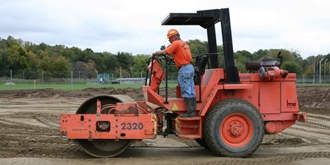Lancaster Trenching - Professional Trenching Solutions in Lancaster, Ohio
Thorough Exploration: The Science Behind Superior Excavation Practices
The world of excavation techniques is a domain where scientific research links with craftsmanship to discover the secrets hidden below the planet's surface. From old hand devices to modern-day hydraulic excavators, the evolution of excavation strategies has been a testimony to human resourcefulness and technological improvements. Nevertheless, what really sets remarkable excavation techniques apart is a deep understanding of geological concepts, coupled with the utilization of advanced tools and approaches. By discovering the scientific research behind these methods, we can uncover the keys that lie beneath our feet and value the accuracy and proficiency that enter into every dig.
Advancement of Excavation Methods
Throughout history, the development of excavation strategies has played a crucial duty ahead of time building methods and archaeological explorations. From the primary devices used by our ancestors to the sophisticated machinery used in modern-day times, the progression of excavation approaches has substantially changed just how we come close to numerous projects.
In old times, hands-on labor with standard tools such as shovels, wheelbarrows, and pickaxes was the main technique of excavation. This labor-intensive procedure restricted the depth and scope of excavations, commonly resulting in slow development and restricted accessibility to specific websites. However, as worlds advanced, so did the tools and techniques made use of for excavation.
The Industrial Change noted a turning point in excavation exercise with the intro of steam-powered equipment. This technology transformed the field, enabling for faster and much more extensive excavations. In modern times, innovation plays a pivotal duty in excavation, with innovations like general practitioner systems, drones, and 3D scanning boosting precision and efficiency in the field. The development of excavation techniques proceeds to form the way we construct, discover, and understand the world around us.
Duty of Modern Technology in Excavation

The combination of sophisticated modern technology has actually fundamentally changed the field of excavation, enhancing precision and efficiency to extraordinary levels. One of the key technological advancements that has actually significantly influenced excavation methods is the use of general practitioner systems. These systems allow for exact mapping of excavation sites, enabling operators to accurately situate below ground utilities and structures. Additionally, using telematics in excavation tools has actually made it possible for real-time tracking of maker efficiency, leading to aggressive maintenance and raised operational performance.
In addition, the development of 3D modeling and simulation software application has streamlined the planning process for excavation jobs. Drivers and designers can now visualize the whole excavation procedure before beginning, recognizing potential challenges and maximizing process. In conjunction with this, the execution of drones in excavation activities has actually facilitated airborne surveys, volumetric measurements, and website inspections with unparalleled speed and accuracy.
Geological Principles in Excavation
An understanding of geological principles is necessary for making certain the architectural honesty and stability of excavation websites. Geological variables play a critical duty in determining the feasibility and security of excavation projects (lancaster excavation). One vital geological principle to consider is the kind of dirt or rock existing at the site. Different dirt types, such as sand, clay, or crushed rock, have differing degrees of security and call for different excavation methods. For example, natural soils like clay may require added support to avoid collapses, while sandy soils might be susceptible to disintegration Continued throughout excavation.
In addition, the geological structure of the location, including faults, fractures, and rock developments, have to be very carefully assessed to recognize possible risks and obstacles. Digging deep into near geological fault or unsteady rock developments can lead to instability and prospective risks. By performing complete geological studies and evaluation, excavators and engineers can establish methods to minimize threats and ensure the effective conclusion of excavation tasks. Eventually, including geological concepts right into excavation methods is crucial for attaining secure, efficient, and sustainable outcomes.

Newest Devices for Excavation
In the realm of excavation techniques, contemporary advancements in devices have actually changed the efficiency and accuracy of excavation processes. These drones can supply in-depth aerial studies of excavation websites, supplying real-time data on topography and potential risks.
Another cutting-edge device gaining appeal is the implementation of 3D printing innovation for creating personalized excavation devices. This permits the production of specialized tools that are tailored to the specific needs of a job, raising effectiveness and lowering downtime.
In addition, advancements in materials science have resulted in the development of stronger and more long lasting excavation devices. excavating ohio. Tungsten carbide-tipped excavator accessories, for example, offer remarkable efficiency in tough ground conditions, enhancing efficiency on-site
Science's Effect on Excavation Practices

Additionally, developments in products scientific research have led to the production of stronger, more sturdy excavation tools and devices. As an example, using composite products in shovels and miners has actually enhanced their efficiency and longevity, inevitably boosting productivity on excavation websites. Additionally, clinical research on soil technicians and geotechnical design has provided useful insights into dirt behavior, enabling excavation specialists to make educated choices concerning excavation approaches and soil stablizing strategies. In general, scientific research continues to drive development and renovation in excavation practices, making excavation jobs more efficient, cost-efficient, and sustainable.

Conclusion
To conclude, the advancement of excavation strategies has actually been significantly influenced by innovations in modern technology and a much deeper understanding of geological concepts. The most recent tools and tools utilized in excavation have boosted effectiveness and precision in the area. The application of scientific knowledge has actually substantially enhanced excavation techniques, causing much more effective and lasting methods for digging deep into various sorts of materials.
In the realm of excavation methods, modern developments in devices have reinvented the efficiency and accuracy of excavation procedures. By leveraging scientific concepts, the excavation market Click Here has actually been able to considerably boost effectiveness, accuracy, and safety in excavation processes. GPR permits excavation groups to non-invasively check and map subsurface structures, energies, and possible threats, enabling them to intend excavation projects with better precision and decreased danger of mishaps.
Additionally, scientific research study on soil mechanics and geotechnical engineering has supplied important insights right into soil actions, enabling excavation professionals to make enlightened decisions regarding excavation approaches and dirt stabilization techniques. Generally, science proceeds to drive development and renovation in excavation methods, making excavation projects a lot more efficient, affordable, and sustainable.